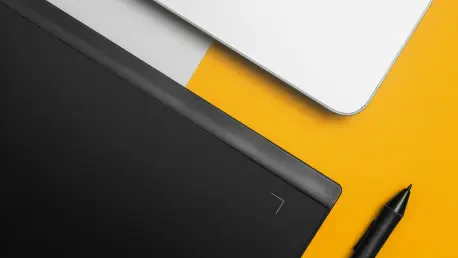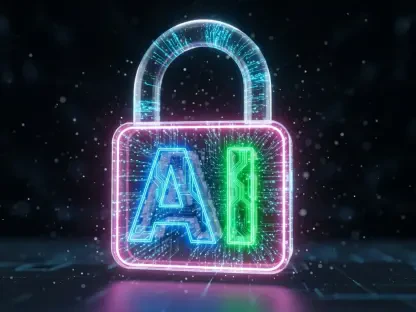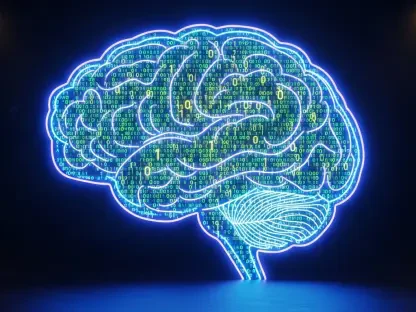As the horizon of 2026 approaches, the realm of graphic design stands on the brink of a captivating transformation, poised to redefine visual storytelling with a potent mix of nostalgia, cutting-edge innovation, and deep cultural resonance that promises to inspire creators worldwide. This exploration into the future unveils ten groundbreaking trends that are expected to dominate the creative landscape, offering invaluable insights for designers, business owners, and enthusiasts eager to stay ahead in a rapidly shifting field. These emerging styles are more than mere aesthetics; they represent a dynamic response to societal cravings for authenticity, emotional connection, and immersive digital experiences. From retro-inspired designs that evoke fond memories to bold, rule-breaking visuals that challenge conventions, the diversity of these trends mirrors the complex interplay of technology and human emotion. Each one serves as a testament to how graphic design continues to evolve, balancing functionality with expressive flair to meet the demands of a tech-driven era. By delving into these anticipated shifts, a clearer picture emerges of a discipline that not only adapts to change but actively shapes it, crafting visuals that resonate on a profound level with global audiences. This journey through the visual revolution of 2026 promises to inspire and equip professionals with the tools to create impactful, forward-thinking content that speaks to both heart and mind.
Nostalgia Reimagined for Digital Realms
The pull of the past emerges as a powerful force in 2026 graphic design, with trends that skillfully blend retro aesthetics into modern digital contexts. Naive Design stands out by reviving the pixelated charm of early video games and internet culture, delivering a playful yet functional look that instantly connects with audiences seeking warmth amid today’s often cold, minimalist interfaces. This trend taps into a generational longing for simpler digital experiences, making it a compelling choice for tech startups and gaming brands aiming to infuse fun into usability. Its ability to merge nostalgia with practical navigation creates a unique bridge between eras, offering a refreshing alternative that feels both familiar and innovative to users across creative sectors.
Complementing this retro wave, Punk Grunge channels the unfiltered, rebellious energy of punk subculture through distressed textures and raw, hand-drawn elements. This trend embodies a DIY ethos, rejecting the polished perfection of mainstream visuals in favor of gritty, authentic layouts that speak to alternative fashion and underground music communities. It offers a striking contrast to the algorithm-driven designs saturating digital spaces, resonating with those who value honesty over refinement. By modernizing analog-inspired techniques, such as mimicking photocopied effects, Punk Grunge captures a sense of unpolished truth, positioning itself as a bold statement of individuality in a world of uniformity.
Pushing Boundaries with Experimental Aesthetics
Venturing into uncharted territory, 2026 graphic design embraces daring experimentation with trends that prioritize emotional impact over traditional clarity. Acid Blur takes center stage with its psychedelic distortions and vibrant color shifts, crafting surreal, dreamlike visuals that defy conventional norms. This style draws inspiration from cultural fascinations with altered states and virtual realities, making it an ideal fit for music and fashion industries eager to stand out with a rebellious, avant-garde edge. While sacrificing readability, Acid Blur’s kaleidoscopic effects evoke a powerful, otherworldly atmosphere, appealing to brands willing to challenge expectations and captivate audiences through sheer visual intensity.
Equally provocative, Type Collage reimagines typography as a chaotic, layered art form, pulling from the raw energy of punk zines and urban street murals. This trend places attitude and emotion above legibility, creating bold, visceral statements perfect for activism campaigns or entertainment branding. Its strength lies in breaking free from the clean, predictable aesthetics that dominate digital platforms, instead offering a design language that feels alive with rebellion. Type Collage reflects a broader cultural push for expression over conformity, enabling creators to provoke reactions and forge memorable connections with viewers through unapologetic visual chaos.
Bringing Organic Warmth to Digital Interfaces
In response to the often sterile nature of digital environments, 2026 sees a surge in trends that infuse warmth and relatability into graphic design. Fuzzy Amorphous Creatures lead this movement with their whimsical, blob-like forms that exude personality and a tactile charm. Often animated with subtle movements like gentle wobbling, these shapes add a human quality to interfaces, making them especially appealing for wellness and education brands aiming to appear approachable. This trend mirrors a societal shift toward embracing imperfection, offering a counterpoint to overly polished content and fostering emotional bonds with audiences who seek genuine, relatable visuals in a competitive online landscape.
Similarly, Blurry Ethereal Florals introduce a calming, romantic aesthetic through soft-focus botanical designs and muted pastel tones. This style evokes a sense of serenity and natural beauty, aligning seamlessly with cultural values of mindfulness and sustainability, and proving ideal for lifestyle and wellness sectors. By prioritizing mood over sharp precision, it creates a visual escape that contrasts with the harsh edges of technology, inviting contemplation in a fast-paced world. Blurry Ethereal Florals serve as a reminder of nature’s enduring appeal, forging deep connections with users who crave tranquility amid the constant noise of digital life.
Emphasizing Clarity and Functional Design
Functionality and precision take precedence in 2026 with trends that position graphic design as a tool for clear, purposeful communication. Signal Graphic Design emerges as a standout, treating visuals as a systematic language through minimalist grids and deliberate elements. This approach ensures transparency and efficiency, catering to tech and educational fields where clarity is paramount. By stripping away unnecessary embellishments, it meets the growing demand for navigable, trustworthy content, demonstrating that design can balance aesthetic appeal with practical utility. Its structured layouts offer a refreshing antidote to overly complex visuals, serving audiences who prioritize straightforward information delivery.
Another trend championing precision, Blueprint Design, merges architectural linework with branding to communicate craftsmanship and expertise. Featuring classic blue-and-white schemes updated with bold color inversions, it resonates with artisanal and craft-focused industries seeking to highlight quality and process. This style builds trust through meticulous detail, reflecting a cultural appreciation for technical skill in an increasingly digital marketplace. Blueprint Design underscores the dual role of graphic elements as both creative expression and functional tools, appealing to consumers who value authenticity and attention to detail in visual storytelling.
Crafting Immersive Narratives Through Visuals
Storytelling and immersion define the final frontier of 2026 graphic design, with trends that prioritize deep, personal connections through curated visuals. Trinket Design captivates by transforming layouts into narrative-driven collections, akin to digital curiosity cabinets where each element feels like a treasured artifact. This maximalist approach contrasts with minimalism’s restraint, offering a layered, museum-like experience ideal for branding with historical or emotional depth. Its ability to weave meaning into every detail resonates with audiences craving rich, meaningful content, allowing businesses to convey heritage and personality through organized yet intricate visual stories.
Gradient Layouts, on the other hand, evolve beyond mere decoration to become structural tools that guide attention and evoke emotion in digital spaces. By mimicking natural phenomena like sunsets with smooth color transitions, they add depth and harmony without the weight of heavy effects, enhancing user interaction on websites and apps. This trend highlights design’s power to create movement and focus, catering to a tech-savvy audience that values seamless, engaging experiences. Gradient Layouts push visual boundaries with experimental palettes, proving that even subtle shifts in tone can craft immersive journeys, connecting with users on a profoundly emotional level.
Reflecting on a Transformative Visual Future
Looking back, the graphic design landscape of 2026 revealed a remarkable fusion of past influences, innovative experimentation, and cultural responsiveness that reshaped visual creativity. Each trend, from the nostalgic charm of Naive Design to the structured precision of Blueprint Design, played a pivotal role in addressing societal needs for authenticity and connection during a time of rapid digital evolution. Designers navigated this era by embracing both emotional resonance and practical utility, creating visuals that spoke to diverse audiences with striking clarity. Moving forward, the challenge lies in adapting these insights to future technological advancements, ensuring that creativity remains human-centered. Exploring how these styles can integrate with emerging tools like augmented reality could unlock new dimensions of engagement. As the industry progresses beyond 2026, maintaining a balance between bold expression and accessibility will be key to sustaining the momentum of this transformative period.









